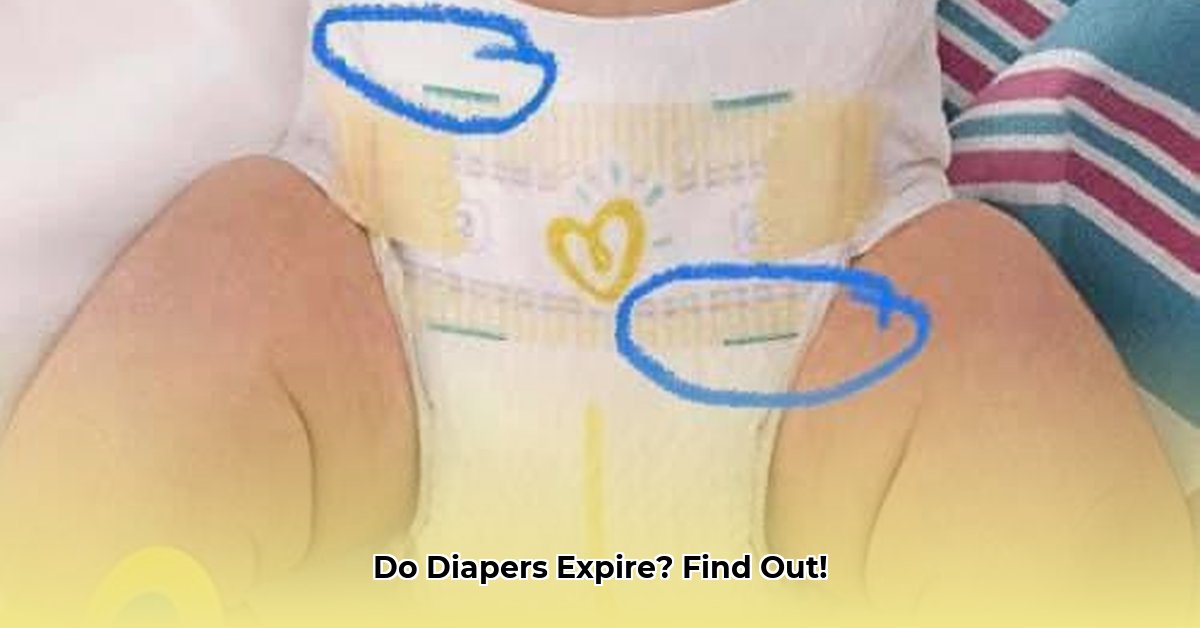# Do Diapers Go Bad? The Ultimate Guide to Diaper Degradation
Do diapers go bad? Yes, they can lose their effectiveness over time. While they won't suddenly become unusable, their ability to absorb messes and keep your baby dry diminishes. This comprehensive guide provides everything you need to know about diaper degradation, including how to maximize their lifespan, identify signs of decline, and handle unused diapers responsibly. From the science behind diaper aging to practical storage tips and eco-friendly alternatives, we've got you covered. Keep your little one comfortable and dry with our expert advice.
## Understanding Diaper Degradation and Shelf Life
Diapers don't have a formal expiration date, but their quality degrades over time. Think of it like a rubber band that loses its stretch – an old diaper won't perform as well as a new one. But why does this happen, and what steps can you take to mitigate it?
## The Science Behind Diaper Degradation: Absorption and Material Breakdown
Modern diapers are complex, utilizing various materials working in harmony. Super Absorbent Polymer (SAP) is the primary component, responsible for absorbing fluids. Over time, SAP can lose its effectiveness. Elastic leg cuffs can weaken, and adhesive tabs can lose their stickiness, leading to leaks. What factors contribute to this degradation process?
### How Long Do Diapers Last? Understanding Diaper Lifespan
Most manufacturers recommend using diapers within two to three years of the manufacture date. However, this is just a guideline. The diaper's environment significantly impacts its lifespan. Heat, humidity, and prolonged exposure to light accelerate the degradation process. Proper storage ensures optimal performance.
### Potential Risks of Using Old Diapers
Using older diapers doesn't pose immediate health risks, but it increases the likelihood of leaks and skin irritation, potentially leading to diaper rash. Look for signs that indicate a diaper is past its prime.
### Practical Advice: Maximizing Diaper Quality and Usage
Here's how to keep your diapers working effectively and manage unused diapers responsibly:
**1. Storing Diapers Like a Pro**
* **Ideal Storage:** Store unopened diapers in a cool, dry, and dark environment such as a pantry or closet. Maintain consistent temperatures to prevent degradation.
* **Inspection is Key:** Before use, examine each diaper for damage, such as tears or weak elastic. Discoloration can indicate reduced absorbency.
**2. Responsible Handling of Leftover Diapers**
* **Donation:** Donate unopened diaper packs to local charities and shelters. Avoid donating used or soiled diapers due to hygiene concerns.
* **Repurposing for Cleaning:** Old diapers can be used for cleaning up spills around the house, excluding food-related incidents.
* **Eco-Friendly Alternatives:** Cloth diapers are a sustainable option, reducing waste and eliminating storage issues associated with disposable diapers.
**3. Eco-Friendly Diapers: Green Choices and Aging**
Eco-friendly diapers also degrade over time, but their environmental impact is significantly lower. While their absorbent materials might break down faster than traditional diapers, their biodegradability makes them a more sustainable choice.
### Key Takeaways: Understanding Diaper Degradation
* **Decreased Effectiveness:** Diapers lose their absorbency, elasticity, and adhesion over time, leading to leaks and potential rashes.
* **Use Within 2-3 Years:** Aim to use diapers within two to three years of their manufacture date.
* **Proper Storage and Inspection:** Store diapers in cool, dry, and dark conditions and inspect each diaper before use.
* **Consider Sustainability:** Opt for cloth diapers for a more environmentally friendly and longer-lasting option.
### Frequently Asked Questions (FAQ)
**Q: Are expired diapers dangerous?**
A: Not inherently dangerous, but less effective, increasing the likelihood of leaks and diaper rash.
**Q: Can I use older diapers on babies with sensitive skin?**
A: It is not recommended. New diapers minimize skin irritation risks.
**Q: How can I tell if a diaper is no longer good?**
A: Check for damage, reduced absorbency (test by squeezing a used diaper), and discoloration.
**Q: How does humidity affect diapers?**
A: Humidity can compromise the integrity of the absorbent materials, making the diapers less effective.
**Q: Where can I find the manufacturing date on diapers?**
A: The manufacturing date is typically printed on the packaging. Look for codes or date formats that indicate when the diapers were made.
| Stakeholder | Short-Term Actions | Long-Term Actions |
| :-------------------- | :--------------------------------------------------------- | :------------------------------------------------------------------------------------------------------------------------- |
| Parents | Proper storage; pre-use inspection; responsible disposal | Consider cloth diapers; plan purchases carefully; donate extra diapers; participate in recycling programs |
| Manufacturers | Clear labeling with manufacturing dates; improved materials | Sustainable manufacturing & disposal processes; research into more durable and eco-friendly materials |
| Retailers | Stock rotation; clear information on product lifespan | Support sustainable options; promote responsible disposal; educate consumers on diaper recycling |
| Environmental Agencies | Advocate for better disposal methods; promote sustainable alternatives | Develop policies; fund research into biodegradable diaper materials and waste management solutions; incentivize recycling |
Latest posts by Chaztin Shu (see all)
- Bento Box Trays Streamline Restaurant Meal Presentation and Transport - December 13, 2025
- Plastic Bento Boxes Face Scrutiny Over Sustainability Impacts - December 11, 2025
- Bento Tray Revolutionizes Organized Meal Transport and Presentation - December 10, 2025










